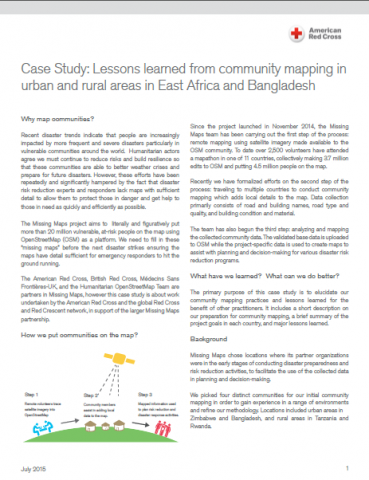Case Study
Case Study: Lessons learned from community mapping in urban and rural areas in East Africa and Bangladesh


The Missing Maps project aims to literally and figuratively put more than 20 million vulnerable, at-risk people on the map using OpenStreetMap (OSM) as a platform. We need to fill in these “missing maps” before the next disaster strikes ensuring the maps have detail sufficient for emergency responders to hit the ground running.
The American Red Cross, British Red Cross, Médecins Sans Frontières-UK, and the Humanitarian OpenStreetMap Team are partners in Missing Maps, however this case study is about work undertaken by the American Red Cross and the global Red Cross and Red Crescent network, in support of the larger Missing Maps partnership.
American Red Cross, 2015.
